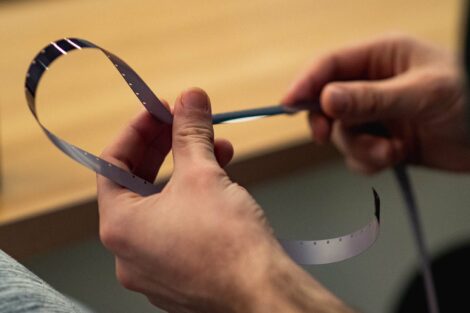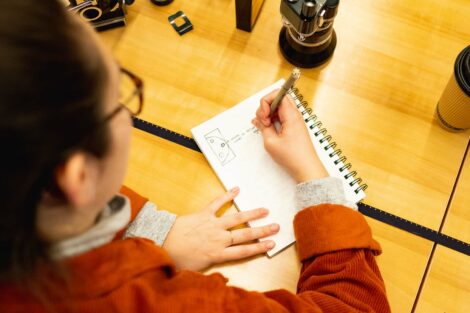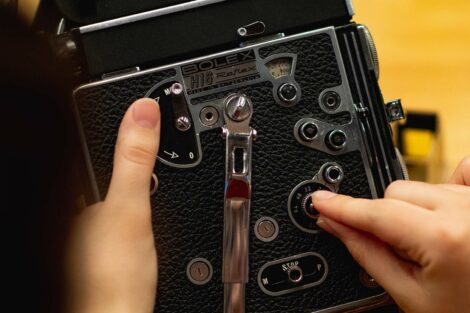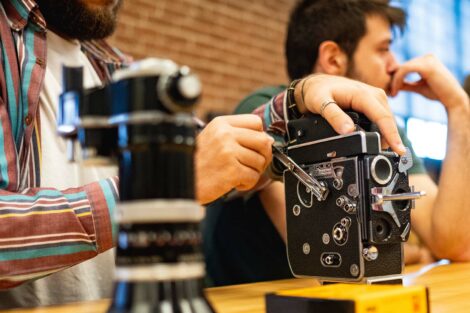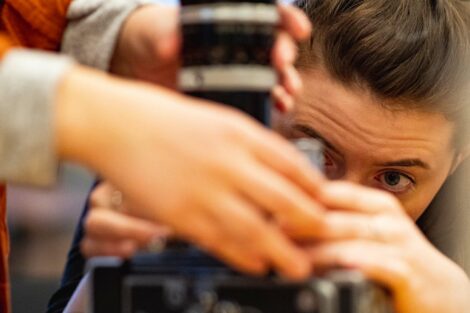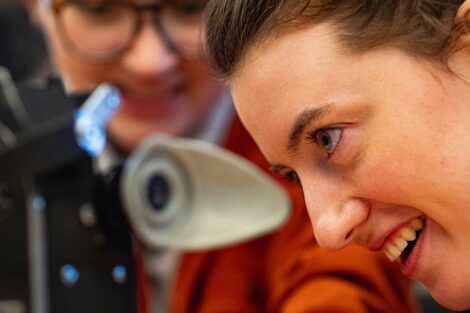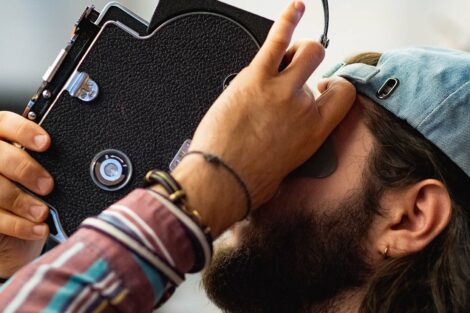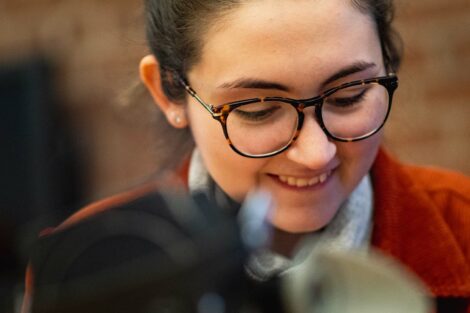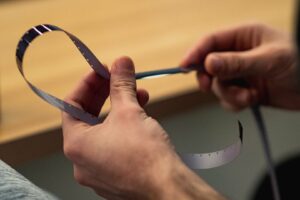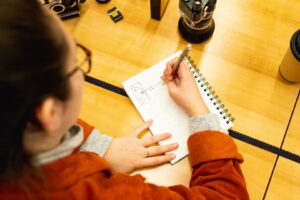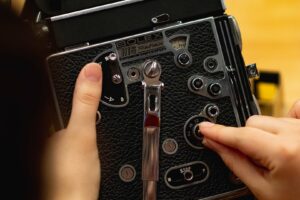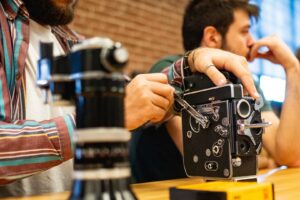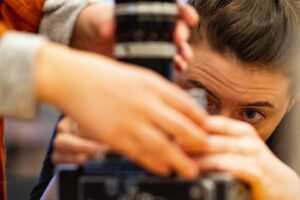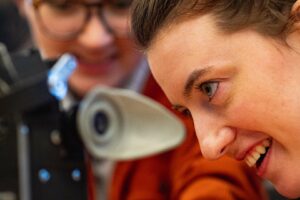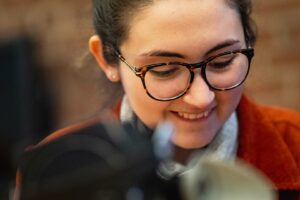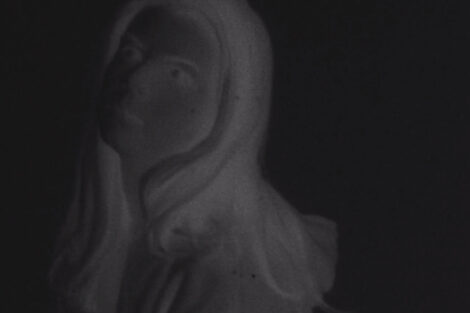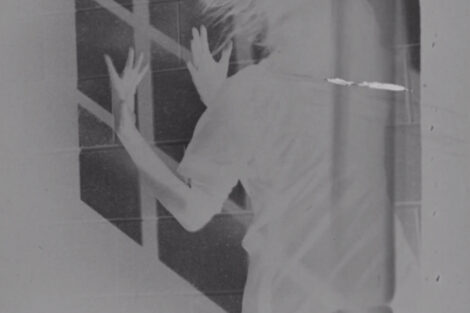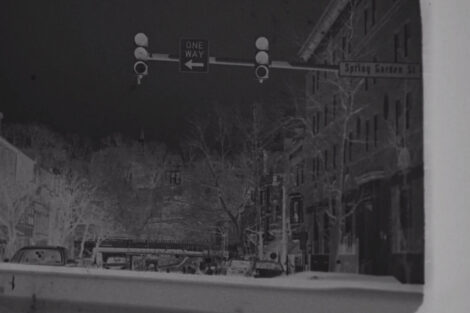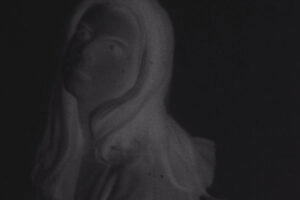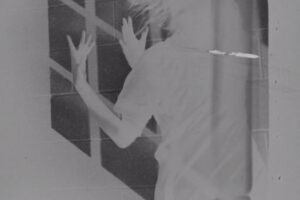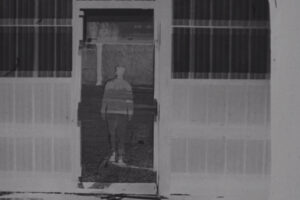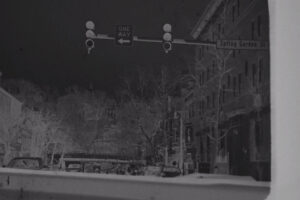By Stephen Wilson
When making a film is as easy as swiping left on a phone screen, something is lost. While the power of filmmaking is more equally distributed, gone are the history and process of making a living art—light striking microscopic silver halide crystals in a gelatin emulsion on a celluloid film base.
Gone is the science of mixing development chemicals. Gone is the tactile nature of handling freshly processed film. Gone is the clicking sound from a film strip projector.
To help recover a sense of this original approach to filmmaking, film and media studies (FAMS) students in Nandini Sikand’s Experimental Cinema class invited Brooklyn-based nonprofit film organization Mono No Aware to campus for a full–day hands-on workshop March 1.
Dedicated to nurturing a community of individuals through the history, practices, and possibilities of the cinematic experience, Mono No Aware, a Japanese term that means a connection to the ephemeral, is keeping Super 8, 16 mm, and 35 mm equipment and practices alive.
This awareness of impermanence feels apt to a filmmaking industry that has largely moved to digital formats.
Brandishing a 16 mm camera, Steve Cossman, founder and executive director of Mono No Aware, talks about his DIY way of handling all sides of running the organization, from the annual festival, workshops, and screenings to salvaging equipment, building a wet/dry lab, crafting a library of resources, and promoting it all.
“I serve as a community activist, business person, teacher, and preservationist,” he says.
Teacher is the hat he puts on for a Sunday workshop where students do it all: loading film into a 16 mm Bolex camera, operating a light meter, and focusing the lens. Cossman then gives teams of students 90 minutes to shoot anything they want.
While some head right out to use the 100 feet of film they have, others hang back wanting to review with Cossman how to create double exposure. In a Laros-funded project, student involvement and artist interaction are crucial.
Soon they will be working with Cossman to process the film, dry it, and screen their work on a projector.
“We often talk about ‘making’ films, and today students were able to do exactly that,” says Sikand, associate professor of film and media studies and recent Guggenheim Fellow. “They experienced the materiality and tactility of film firsthand by threading film into the cameras, capturing images, mixing a nontoxic developer with their hands in the dark room, drying it on a rack, and then spooling it on projector reels. What they watched, they truly made.”
At the end of day, the films were a range of moments, cinematic transitions between scenes, studies of location and object, and artful double exposure—just the kinds of stuff that make ephemera beautiful.
Here are a few still images from the footage students captured.
